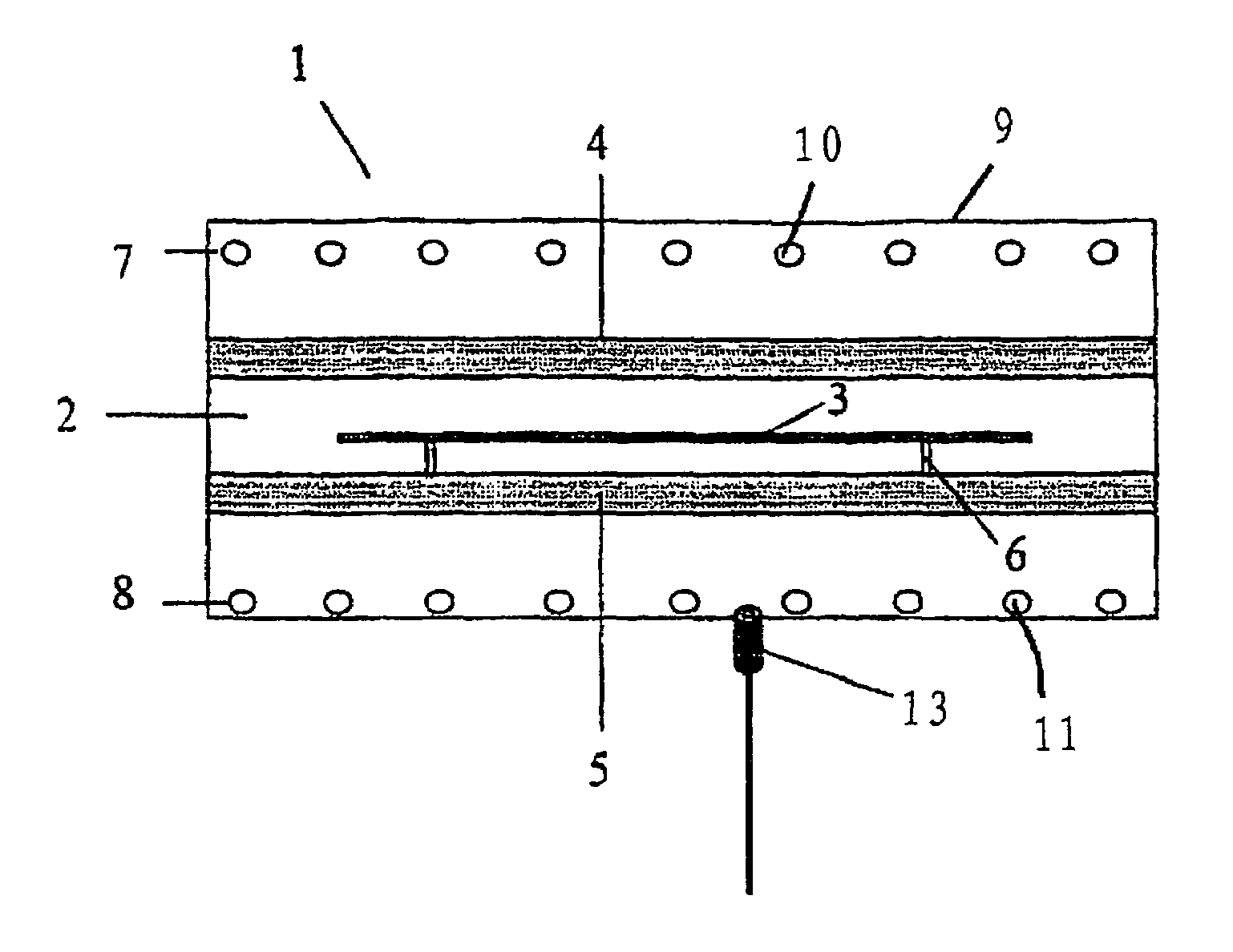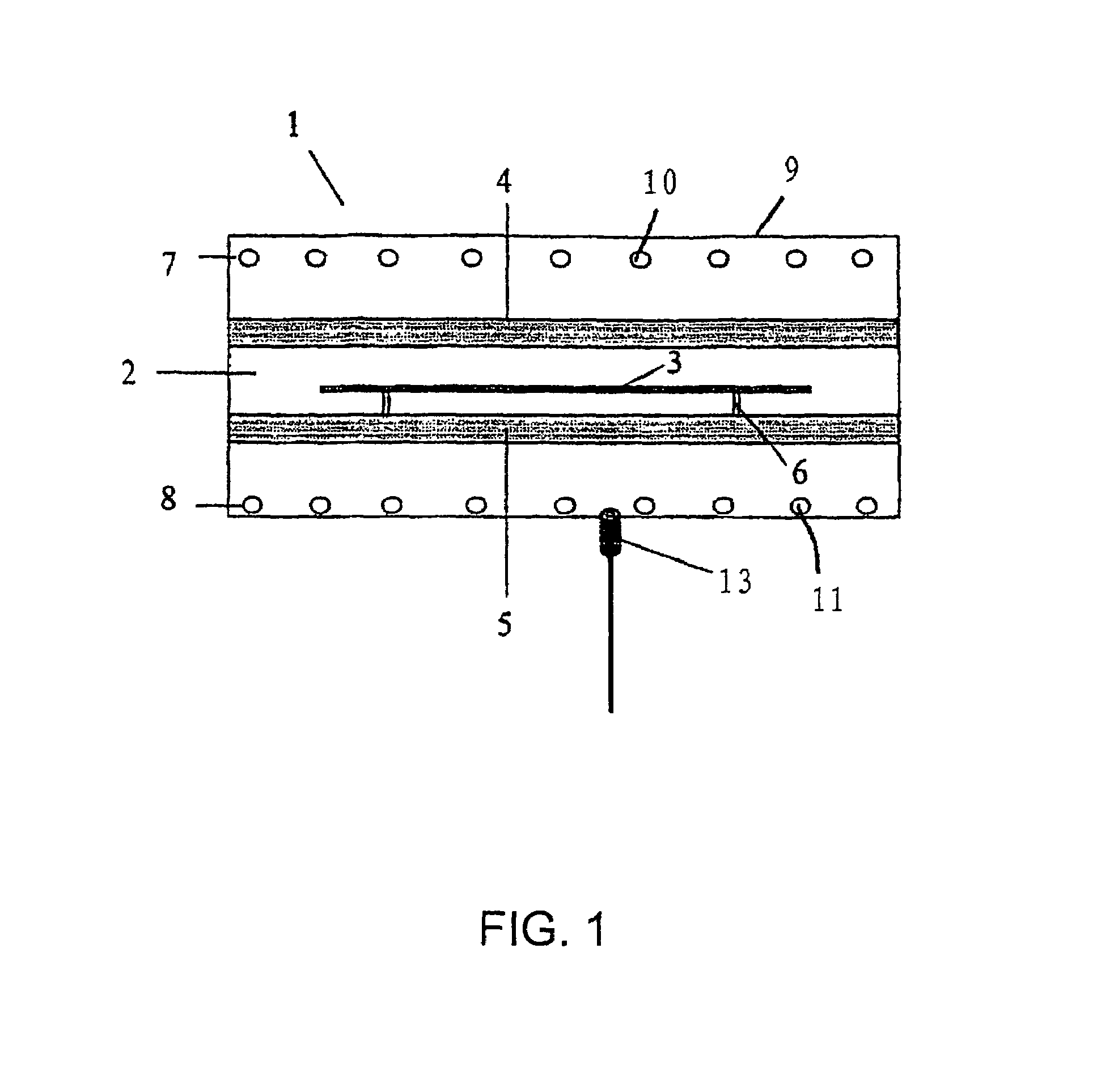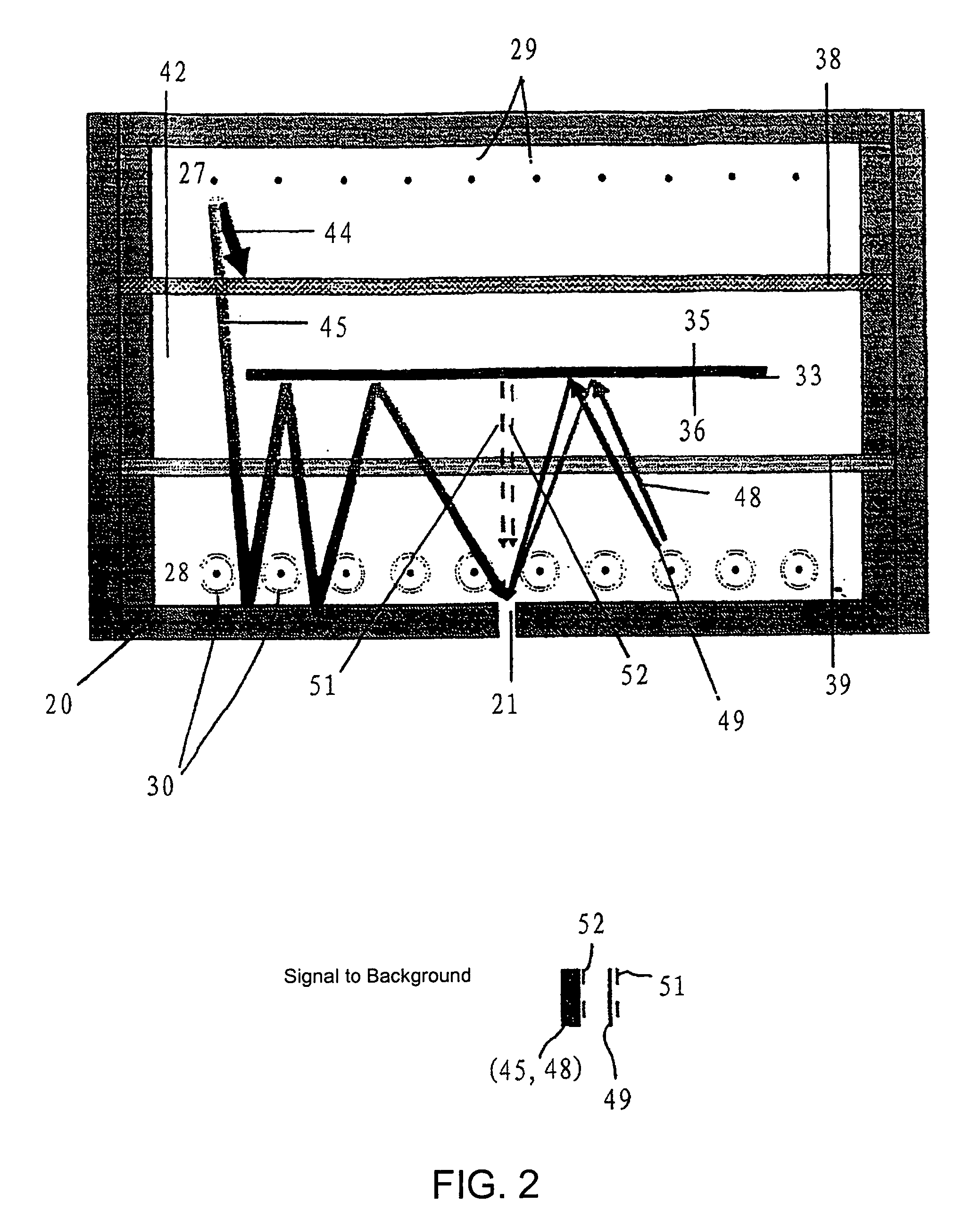Method and device for thermal treatment of substrates
a substrate and thermal treatment technology, applied in the field of methods and devices for thermal treatment of substrates, can solve the problems of difficult separation of background radiation emitted by heat lamps from radiation emitted by heat lamps, rapid decrease of radiation emitted from the background, and unfavorable signal (radiation emitted from the wafer) to the background, so as to achieve reliable heating of the substrate, the effect of maximum heating rate of the wafer and careful yet rapid heating of the structure wafer
- Summary
- Abstract
- Description
- Claims
- Application Information
AI Technical Summary
Benefits of technology
Problems solved by technology
Method used
Image
Examples
Embodiment Construction
[0033]The invention will be explained in greater detail subsequently with the aid of preferred embodiments of the present invention.
[0034]FIG. 1 shows, in cross-section, a rapid heating system 1 for the rapid heating of semiconductor wafers pursuant to a first embodiment of the invention. A process chamber 2, which accommodates a semiconductor wafer 3, is formed by an upper transparent plate 4 and a lower transparent plate 5, preferably quartz plates. In the process chamber 2, the wafer 3 that is to be processed is placed upon a support device 6. Not indicated are inlets and outlets for process gases via which a gas atmosphere that is suitable for the process can be produced.
[0035]Mounted above and / or below the process chamber 2 are heating devices in the form of banks of lamps 7 and 8. The plates 4 and 5 are disposed between the wafer 3 and the banks of lamps 7 and 8, and thus have the effect of a transparent shield for the formation of a closed process chamber. The entire arrangem...
PUM
| Property | Measurement | Unit |
|---|---|---|
| Time | aaaaa | aaaaa |
| Wavelength | aaaaa | aaaaa |
| Wavelength | aaaaa | aaaaa |
Abstract
Description
Claims
Application Information
 Login to View More
Login to View More - R&D
- Intellectual Property
- Life Sciences
- Materials
- Tech Scout
- Unparalleled Data Quality
- Higher Quality Content
- 60% Fewer Hallucinations
Browse by: Latest US Patents, China's latest patents, Technical Efficacy Thesaurus, Application Domain, Technology Topic, Popular Technical Reports.
© 2025 PatSnap. All rights reserved.Legal|Privacy policy|Modern Slavery Act Transparency Statement|Sitemap|About US| Contact US: help@patsnap.com



